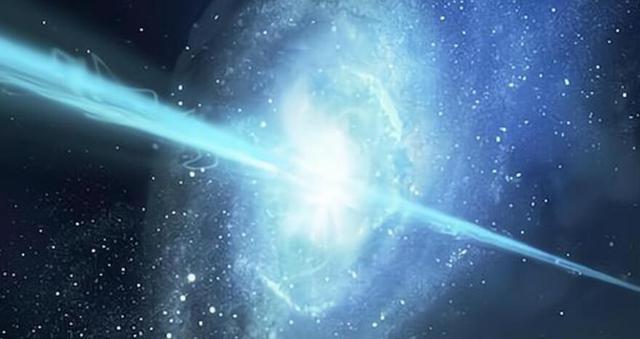Every shining star in the universe will one day go out, and their 'lifespan' is closely related to their mass, the more massive the star, the shorter its 'lifespan'. For example, a proxima star can have a "Lifetime" Of trillions of years, while the sun has a "Lifetime" Of about 10 billion years, and stars that are much more massive than the sun have an even shorter "Lifetime".
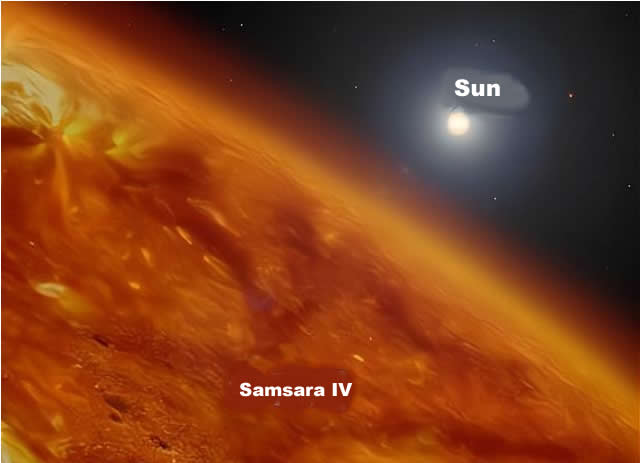
For example, sensui iv, about 640 light-years away, is 16.5 to 19 times as massive as the sun, and this mass makes the star's "Lifetime" Much lower than that of the sun, and although it was born 8 to 8.5 million years ago, it is already in its "Old age it is already in its "Old age".
According to known patterns of stellar evolution, massive stars like sensui iv do not die out silently in the universe; after the "Nuclear fuel" In their core is depleted, they undergo a powerful "Supernova explosion", which releases enough energy in a short time to rival an entire galaxy. The energy released in a short time would rival that of an entire galaxy.
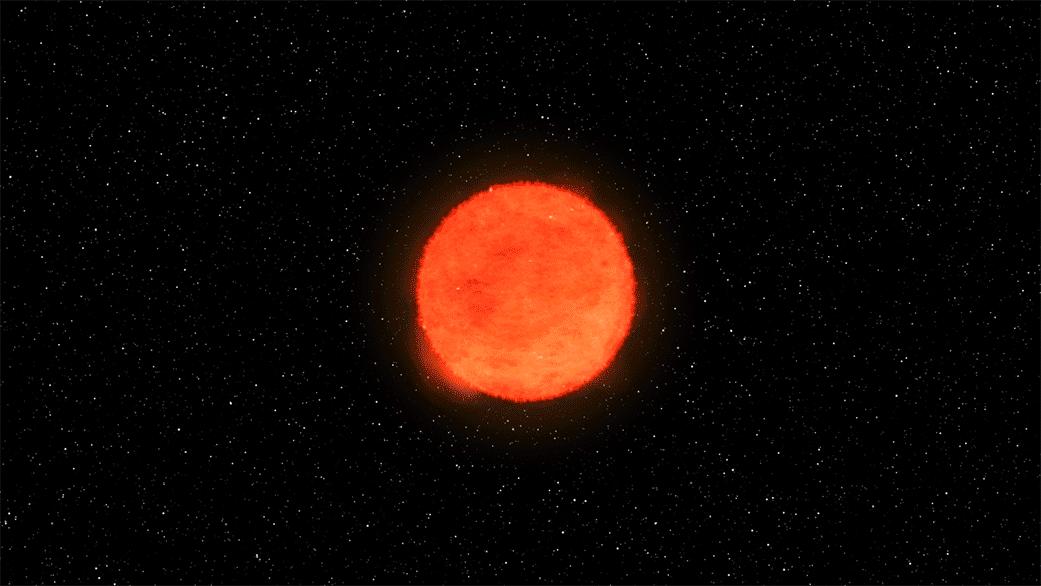
Observations show that at this stage sensui iv has evolved into a "Red supergiant", which can be up to 700 million times the size of the sun, and that this is the last stage of the sensui iv life cycle, which means that in the near future, this giant star, which is not too far away from us, will undergo a "Supernova explosion". This is the last stage of the life cycle of sensui iv, which means that in the near future this giant star, which is not too far away from us, will undergo a "Supernova explosion".
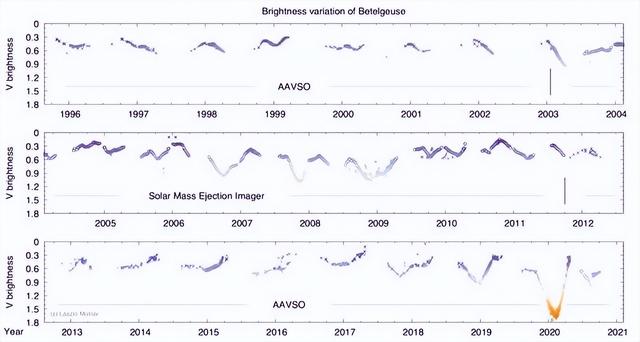
The chart above shows the observed record of sensui iv over the last 20 years or so (the horizontal axis represents the year, the vertical axis represents the apparent magnitude), and you can see that the brightness of sensui iv has actually been changing since 1996, but usually within a small range, but between late 2019 and early 2022, the star underwent a steep dimming.
At one point during this dimming, the brightness of sensua iv dropped to about two-thirds of its normal level, leading to speculation that sensua iv was likely to blow up, but this did not happen, as it gradually returned to its normal brightness over the next few days.
The anomalous behaviour of sensui iv has certainly attracted a lot of attention, and astronomers have offered a variety of explanations for this phenomenon in subsequent studies, with one of the most widely accepted being that a huge dust cloud may have briefly obscured some of sensui iv's light, giving us the illusion that the star had dimmed.
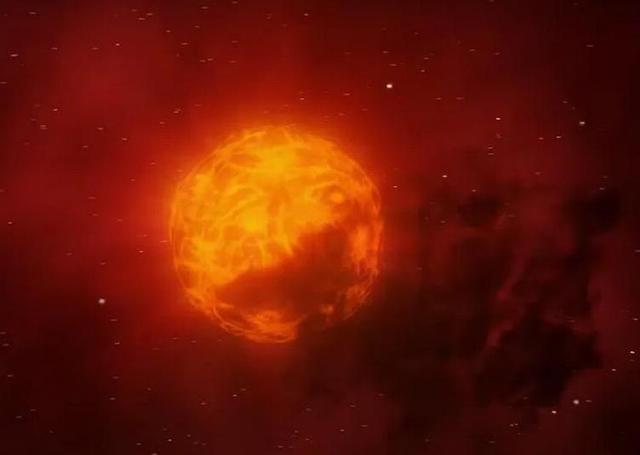
Recently, a new study suggests that this dimming of sensui iv may not have been simply the result of a dust cloud, as it is suspected that sensui iv was pierced by a mysterious force before it dimmed.
The study was led by astronomer lynn matthews of the massachusetts institute of technology and astronomer andre dupree of the smithsonian astrophysical center at harvard university.
In their paper to be published in the astrophysical journal, they note that after careful analysis of detailed observations of sensui iv, the researchers found that the actual brightness of sensui iv during this darkening was about 20% fainter than previously announced, and that although the distribution of its surface brightness was more complex than the theoretical uniform elliptical disk, it did not have the distinctive features of being obscured by a dust cloud.
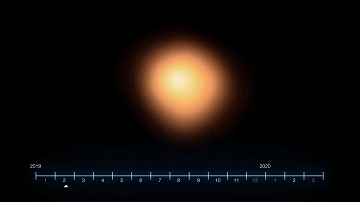
The figure above shows the darkening process of sensui iv based on actual observational data. The researchers found that during the darkening of sensui iv, there was a significant increase in electron density in its southern hemisphere, accompanied by signs of significant material loss.
After correlating these phenomena with the radio characteristics of sensua iv, the researchers made the bold assumption that sensua iv may have been pierced by a large-amplitude shock wave before dimming, which caused a change in the density structure and surface temperature of sensua iv, and that the brightness of sensua iv dimmed steeply during the subsequent massive loss of material, which gradually returned to normal when everything subsided. Brightness gradually returns to normal again.
So if this is the case, what mysterious force is responsible for such a powerful shockwave?
Astronomers do not have a definitive answer to this question, and can only offer a reasonable guess that the shock wave came from inside sensui iv, whose core is usually not very stable when a star like sensui iv is nearing the end of its life cycle. Of course, this is just a guess, and we could also speculate that this is a mysterious force from deep space, except that it would be a bit sci-fi.
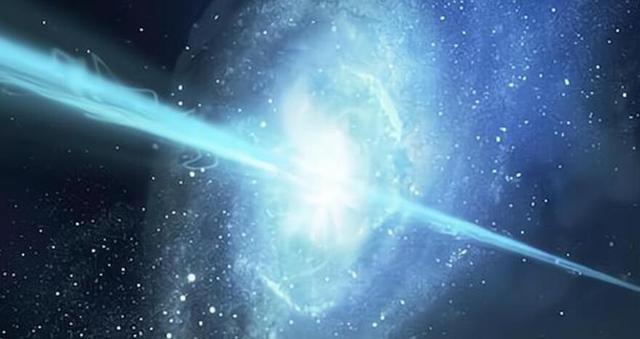
It is worth noting that at a distance of 640 light-years, even if a "Supernova explosion" Were to occur in sensui iv, it is unlikely that the material shock waves generated by the explosion would affect the earth. Fortunately, the direction of the gamma ray burst is aligned with the star's rotation axis, and the rotation axis of sensui iv is not aligned with the earth, being at least 20 degrees off, so we do not have to worry about sensui iv posing a threat to earth in the future.


